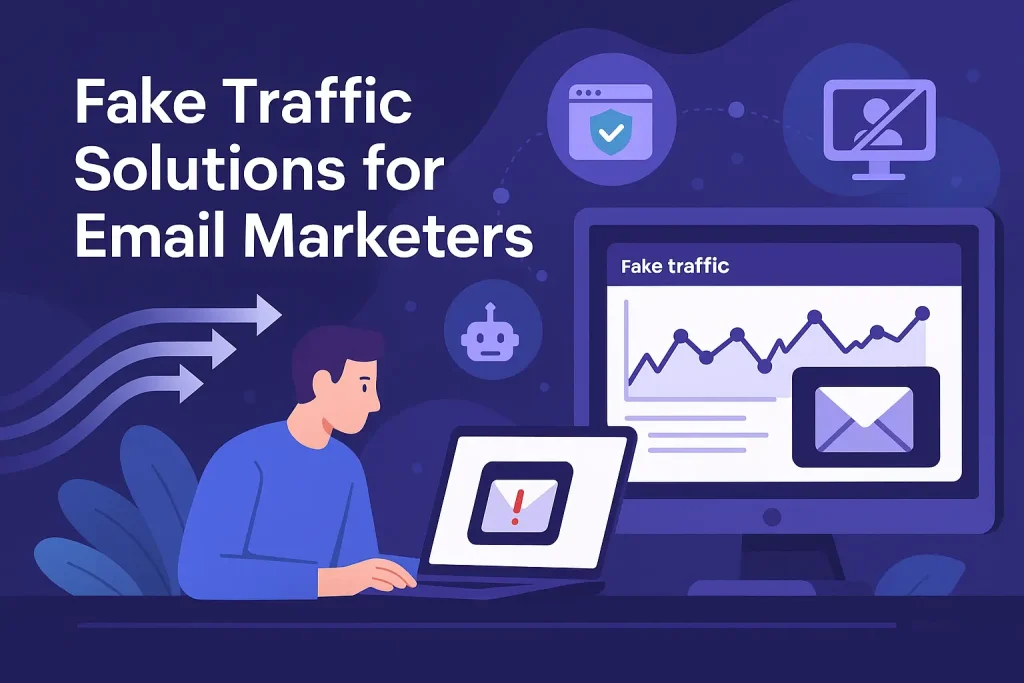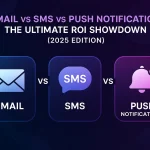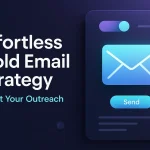
Email marketers often face a big problem: fraudulent bot activity. This makes their campaign numbers look wrong and wastes time. It also means they might think their campaigns are working better than they really are.
To fight this, it’s key to know what’s going on and use good strategies. Our article will show you how to spot and stop fake traffic. This way, your email marketing will be more precise and effective.
By the end of this article, you’ll know how to make your email marketing better. You’ll also learn how to get more value from your efforts.
Table of Contents
The Growing Threat of Fake Bot Traffic
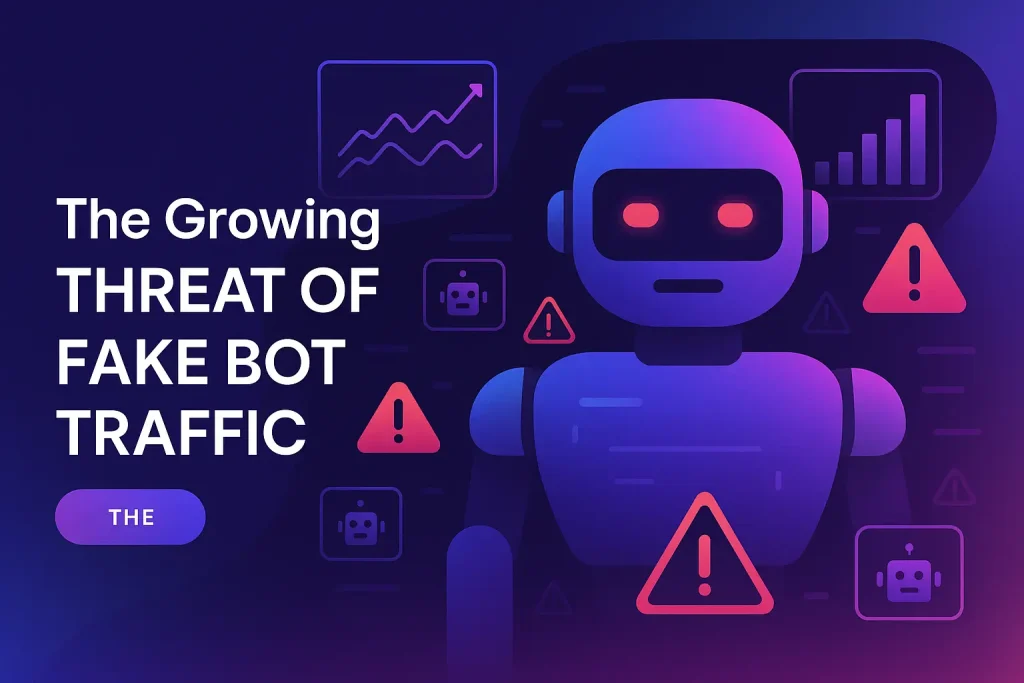
Fake bot traffic is a big worry for email marketers in 2023. The digital world keeps changing. So do the tricks used by bad guys to mess with email marketing.
Fake bot traffic makes it seem like more people are visiting websites or clicking on emails. But it’s not real. It’s just fake bots doing it.
What Constitutes Fake Bot Traffic in Email Marketing
It’s key to know what fake bot traffic is. We need to tell the good bots from the bad ones.
Malicious vs. Legitimate Bot Activity
Not all bots are bad. Good bots help by making websites easier to find. But bad bots try to trick email marketing numbers.
Common Bot Behaviors in Email Ecosystems
Bad bots click links fast, fill out forms with fake info, and steal email content. These actions mess up email stats and hurt who sends emails.
The Scale of the Problem in 2023
Fake bot traffic is a big deal. Stats and trends show it’s getting worse. It really hurts how much money email marketing makes.
Industry Statistics and Trends
Studies say fake bot traffic is a big part of email interactions. Here are some important numbers:
| Year | Fake Bot Traffic Percentage | Impact on Email Marketing ROI |
|---|---|---|
| 2021 | 15% | -5% |
| 2022 | 20% | -8% |
| 2023 | 25% | -12% |
Cost Impact on Email Marketing ROI
Fake bot traffic costs a lot. It makes email campaigns less effective. This leads to a big drop in how much money email marketing makes.
How Fake Bot Traffic Impacts Email Marketing Metrics
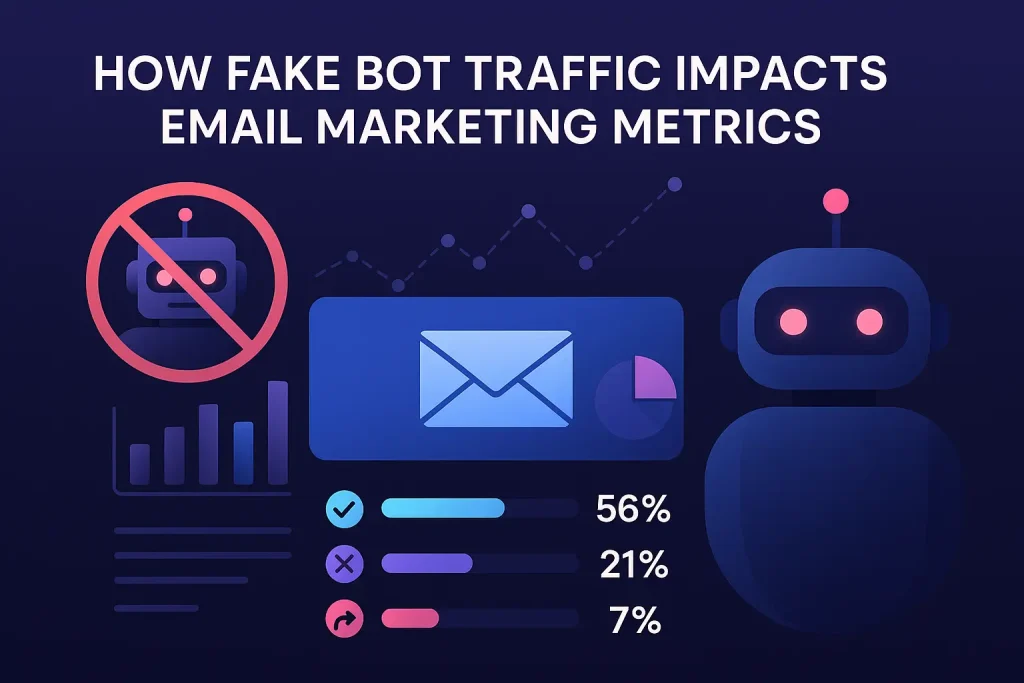
Email marketers face a big challenge from fake bot traffic. It can make their campaigns seem more successful than they are. This can mess up their numbers, hurt their reputation, and affect their profits.
Skewed Analytics and False Reporting
Fake bot traffic messes up email marketing numbers. Bots can make it seem like more people are opening and clicking on emails. This can lead to bad decisions in marketing.
Open Rate Manipulation
Bots can make it seem like more people are opening emails. This can trick marketers into thinking their subject lines are better than they really are.
Click-Through Rate Distortion
Also, bots can click on links, making it seem like more people are interested. This can make marketers think their calls-to-action are working better than they are.
Deliverability and Sender Reputation Damage
Fake bot traffic can hurt how well emails get delivered. It can also damage the reputation of the sender.
IP Reputation Consequences
Too much bot activity can hurt the reputation of an IP address. This can make emails get flagged as spam or blocked.
Domain Authority Erosion
Also, bots can make it harder for real emails to get through. This is because the domain’s authority gets damaged.
Financial Implications for Marketers
Fake bot traffic can cost marketers a lot of money. They might spend too much on fake engagement and not use their resources well.
Wasted Budget on Fake Engagement
Marketers might pay for fake engagement from bots. This means they’re wasting money that could be used for real marketing.
Resource Allocation Inefficiencies
Also, the wrong metrics can lead to bad planning. Marketers might focus on strategies that seem good because of bots, but really aren’t.
| Impact Area | Effect of Fake Bot Traffic | Consequence for Marketers |
|---|---|---|
| Analytics | Skewed open and click-through rates | False reporting and misguided strategies |
| Deliverability | Damaged IP reputation and domain authority | Emails flagged as spam or blocked |
| Financials | Wasted budget on fake engagement | Inefficient resource allocation |
To fight these problems, marketers need to use fake traffic detection tools. They should also find ways to reduce the impact of fake bot traffic. This will help them get more accurate numbers and improve their campaigns.
Common Types of Fake Bot Traffic Affecting Email Campaigns
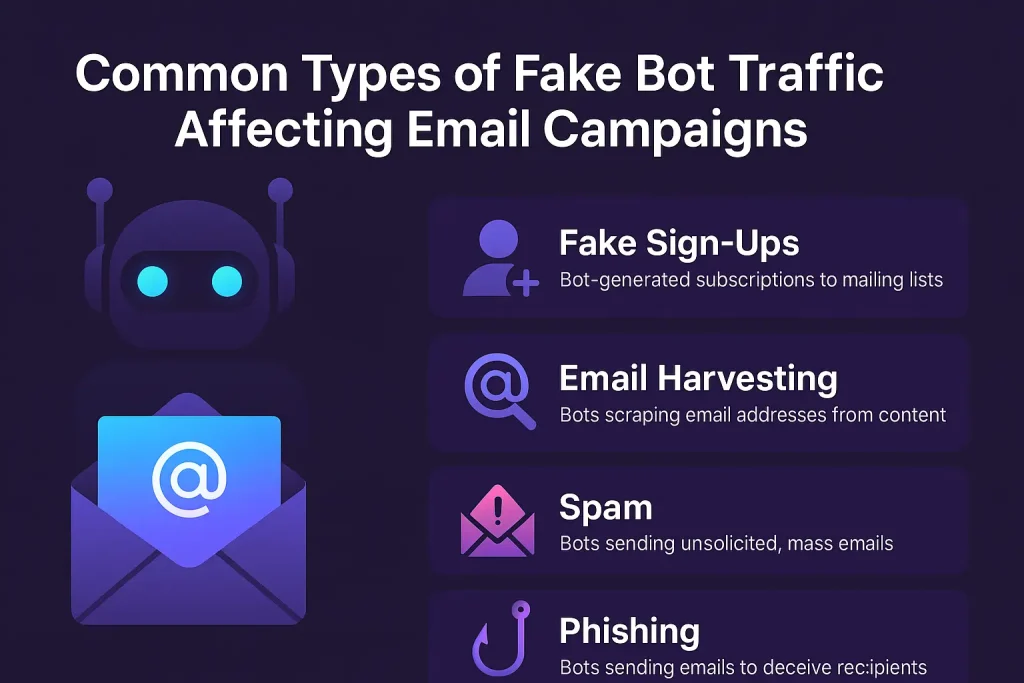
To fight fake traffic in email marketing, we need to know the bots that harm campaigns. There are many types of bots, each with its own way of affecting email marketing.
Click Fraud Bots
Click fraud bots try to make it look like more people are clicking on ads. They do this to hurt competitors’ budgets or to make more money from affiliate programs.
Link Manipulation Techniques
These bots trick people into thinking they are real. They click on links in ways that look like real users. This can mess up how we see how well campaigns are doing.
Affiliate Fraud Mechanisms
Affiliate fraud bots fake clicks on affiliate links. This means people get paid for nothing, and advertisers lose money.
Form-Filling Bots
Form-filling bots fill out forms on websites. They do this for bad reasons like scams or to get lots of email addresses.
Lead Generation Fraud
Lead generation fraud happens when bots fill out forms with fake info. This can lead to selling bad leads or spamming.
Subscription Form Abuse
Subscription form abuse is when bots sign up for things with fake emails. This can make email lists messy and hurt how well emails get delivered.
Scraper Bots
Scraper bots take content from websites. They might do this to steal content or to learn about competitors.
Content Theft Operations
Content theft is when bots take and use content from other sites. This can hurt the original content’s value and might break copyright laws.
Competitive Intelligence Gathering
Competitive intelligence bots take data from competitors’ sites. This helps them get ahead in the market.
Engagement Manipulation Bots
Engagement bots make it look like more people are interacting with emails. This makes campaigns seem better than they really are.
Artificial Engagement Patterns
These bots make fake patterns that look like real people are interacting. This can trick marketers into thinking their campaigns are doing well.
Social Proof Manipulation
Social proof bots make it seem like more people like something. This can change how people see a brand or campaign.
Knowing about these bots is key to keeping email marketing real and effective.
Fake Bot Traffic Issue Solutions for Email Marketers
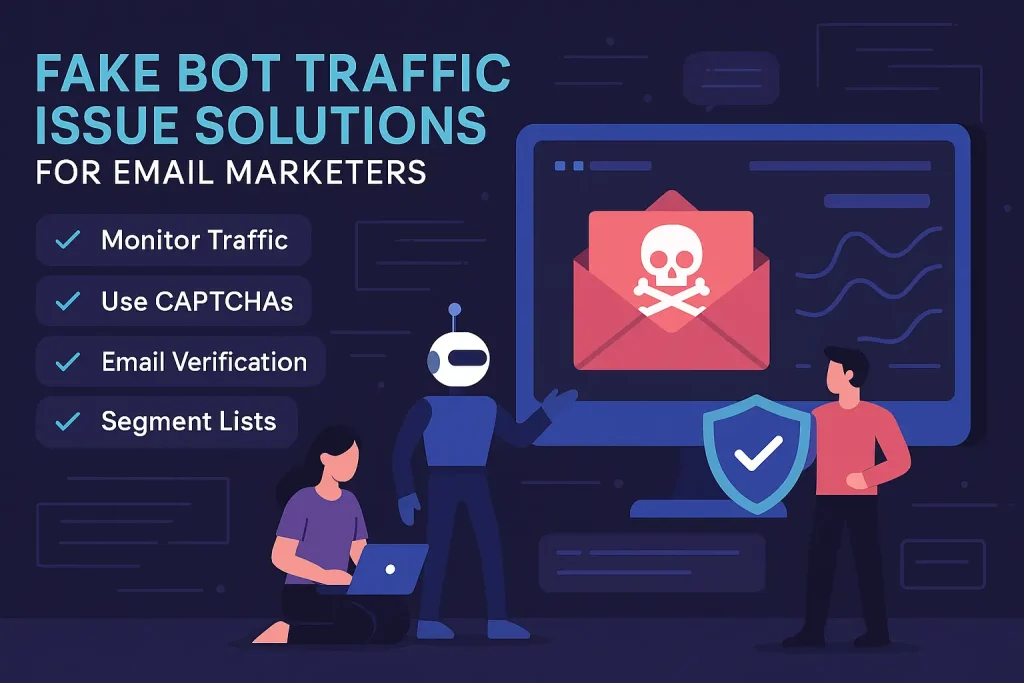
Email marketers now face a big challenge. They must tell real users from fake bots. As bots get smarter, so must our ways to stop them.
Comprehensive Approach to Bot Traffic Mitigation
To fight fake bot traffic, we need a strong plan. This plan should use many security layers. It’s not just about finding bots, but also understanding and stopping new threats.
Multi-layered Defense Strategies
Using a multi-layered defense is key. This means using email analytics platforms to watch traffic. Also, CAPTCHA challenges to check if it’s a real person. And IP verification systems to block bad activity.
- Use email analytics to spot odd patterns
- Put CAPTCHA in to stop fake traffic
- Block known bots with IP verification
Integration with Existing Security Frameworks
It’s vital to link bot fight plans with current security setups. This makes a strong defense against many threats.
| Security Measure | Function | Benefit |
|---|---|---|
| Email Analytics | Watches traffic patterns | Finds possible bot activity |
| CAPTCHA Challenges | Checks if it’s a real person | Stops fake bot traffic |
| IP Verification | Checks IP against known bots | Blocks bots from email campaigns |
Balancing Security with User Experience
Security is important, but so is making sure users are happy. Too much security can scare off real users.
Friction-Free Security Measures
Using friction-free security means keeping real users happy while stopping bots. This includes things like getting to know users better and checking their risk level.
Progressive Security Implementation
Starting with basic security and adding more as needed is smart. This way, security gets better but doesn’t feel too hard for users.
By using a smart and balanced way to fight bot traffic, email marketers can keep their campaigns safe. And they can do it without making users unhappy.
Identifying Bot Traffic: Key Warning Signs
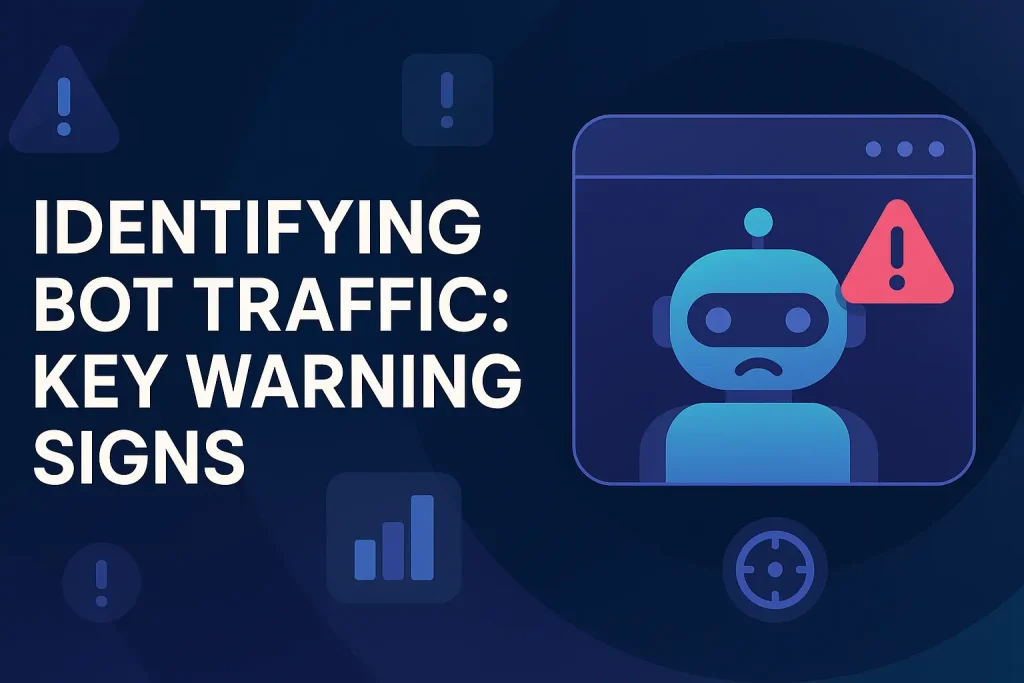
Bot traffic in email campaigns can be spotted by certain signs. Email marketers need to know these signs. This helps keep their campaigns safe and accurate.
Unusual Traffic Patterns to Monitor
Watching traffic patterns is key to finding bots. Look out for timing and volume oddities.
Timing Anomalies
Bots don’t act like people, so they show up at weird times. Timing anomalies are a big warning sign.
Volume Inconsistencies
Big changes in traffic numbers might mean bots. Volume inconsistencies need checking.
Suspicious Engagement Metrics
Engagement metrics can show bot signs. Look for odd click patterns and conversion mismatches.
Unnatural Click Patterns
Bots click in strange ways, like clicking every link. This is not like real people.
Conversion Discrepancies
Geographic Anomalies
Geographic data can hint at bot traffic. Look for location and time zone oddities.
Location-Based Red Flags
Unusual locations or known bot areas are warning signs.
Time Zone Inconsistencies
Engagement that doesn’t fit your audience’s time zone might be bots.
| Indicator | Description | Potential Bot Activity |
|---|---|---|
| Timing Anomalies | Traffic at odd hours or consistent intervals | High |
| Volume Inconsistencies | Sudden spikes or drops in traffic | Medium |
| Unnatural Click Patterns | Clicks on every link or predictable patterns | High |
Essential Tools for Detecting Fake Bot Traffic
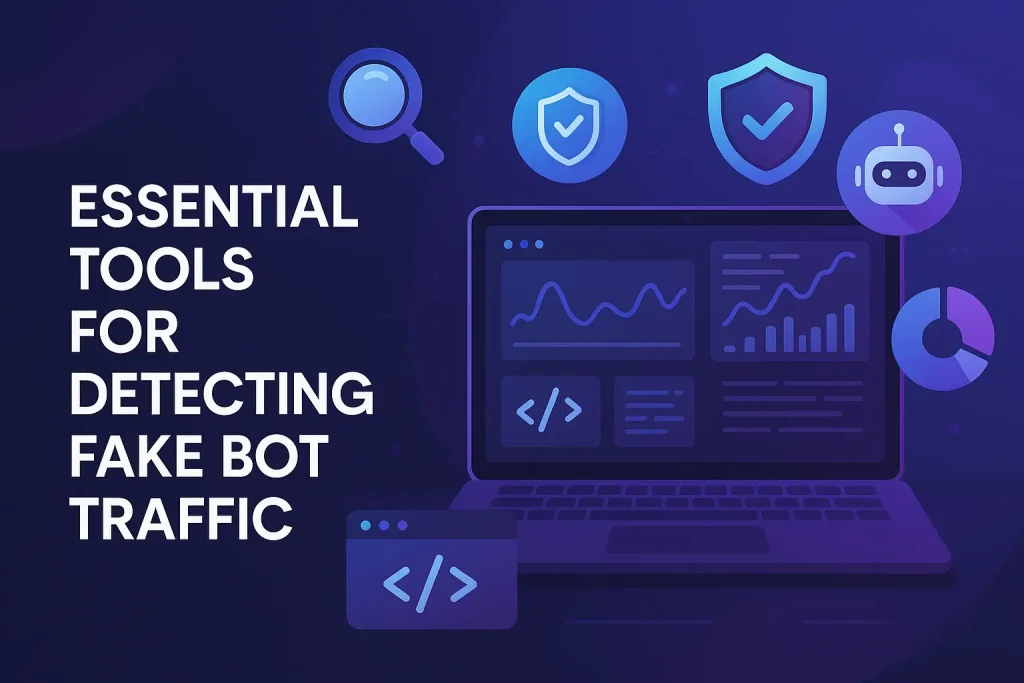
Fake bot traffic is a big problem for email marketing. Email marketers need good tools to find and stop these threats.
Email Analytics Platforms with Bot Detection
Email analytics platforms now have better bot detection. They help see how email campaigns do and block fake bot traffic.
Advanced Filtering Capabilities
Advanced filters help tell real users from bots. They use smart algorithms to check how users act.
Real-Time Monitoring Solutions
Real-time monitoring spots fake bot traffic fast. This quick action keeps email marketing data true.
CAPTCHA and reCAPTCHA Implementation
CAPTCHA and reCAPTCHA help tell humans from bots. Using them can cut down fake bot traffic a lot.
Traditional vs. Invisible CAPTCHA
Traditional CAPTCHAs ask users to solve a problem. Invisible CAPTCHAs work quietly without asking users to do anything. Both can work well in different ways.
Implementation Best Practices
It’s important to put CAPTCHAs in the right way. Think about how users feel and how much security you need.
IP Verification Systems
IP verification checks if IP addresses are real. It helps block IPs that are known to be bots.
IP Reputation Databases
These databases keep track of bad IP addresses. By checking IP addresses against these, marketers can block bad traffic.
Geolocation Verification
Checking where IP addresses are from helps spot suspicious traffic. This helps find fake bot traffic.
Behavioral Analysis Tools
Behavioral analysis tools watch how users act. They look at mouse movements and how users act during a session.
Mouse Movement Tracking
Real users move their mouse in certain ways. Bots don’t, making mouse movement a good way to spot them.
Session Behavior Analysis
Looking at how users act in a session can show if it’s a bot. Bots often move too fast or in unnatural ways.
Using these tools, email marketers can fight fake bot traffic. This makes their campaign data more accurate and helps make better choices.
Implementing Technical Safeguards Against Bots
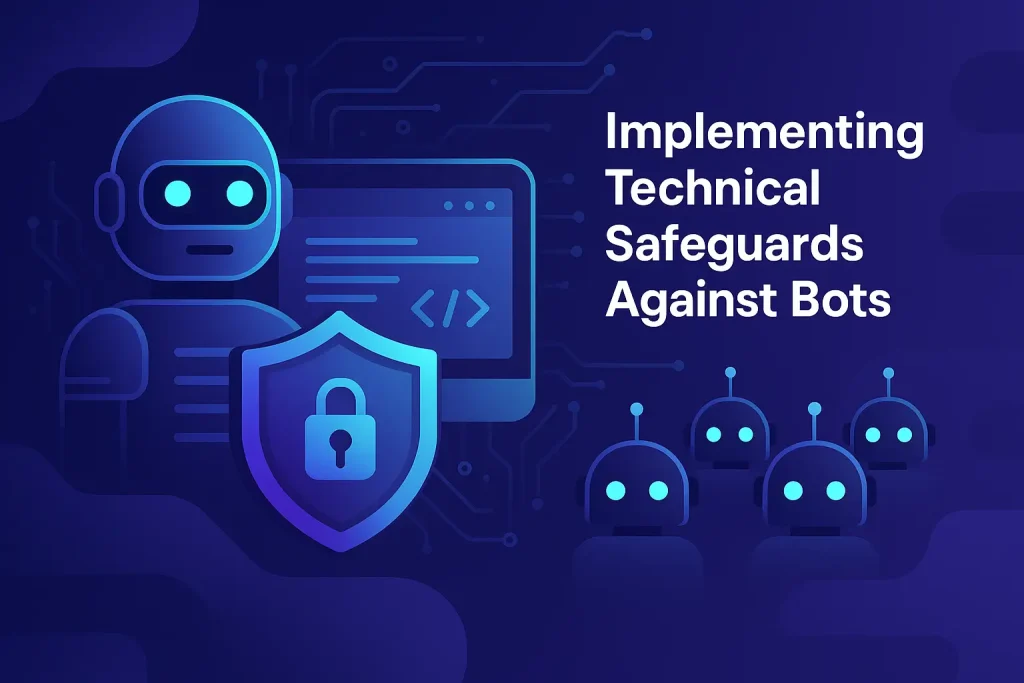
To fight fake bot traffic, we need strong technical shields. As email marketers, we must keep up with new threats. A layered defense is key.
JavaScript Challenges and Browser Fingerprinting
JavaScript challenges and browser fingerprinting are great tools. They check if real browsers are interacting with your emails, not bots.
Client-Side Verification Techniques
Client-side checks run JavaScript on the user’s browser. It looks for special browser traits or actions bots can’t fake.
Device Fingerprinting Methods
Device fingerprinting gathers details about a device. It looks at screen size, browser type, and operating system. This helps spot odd activity that doesn’t look like a real user.
Rate Limiting and Throttling Techniques
Rate limiting and throttling techniques are also vital. They control how often one IP address can ask for things. This stops bots from flooding your system.
API Protection Strategies
API protection limits API calls from one source in a short time. This stops bots from overusing your APIs.
Progressive Throttling Implementation
Progressive throttling slows down responses to repeated requests. It makes it hard for bots to work without slowing down real users.
Honeypot Fields in Email Forms
Honeypot fields are a smart way to catch bots. They’re hidden fields in forms that bots fill out, but humans don’t see. This helps block bot submissions.
Invisible Field Implementation
Invisible fields are for bots to fill out, but humans ignore them. Watching these fields helps catch and stop bot activity.
Time-Based Form Validation
Time-based form checks see how fast a form is filled. Bots fill out forms quickly, so this method spots suspicious activity.
Email List Hygiene Practices to Minimize Bot Impact
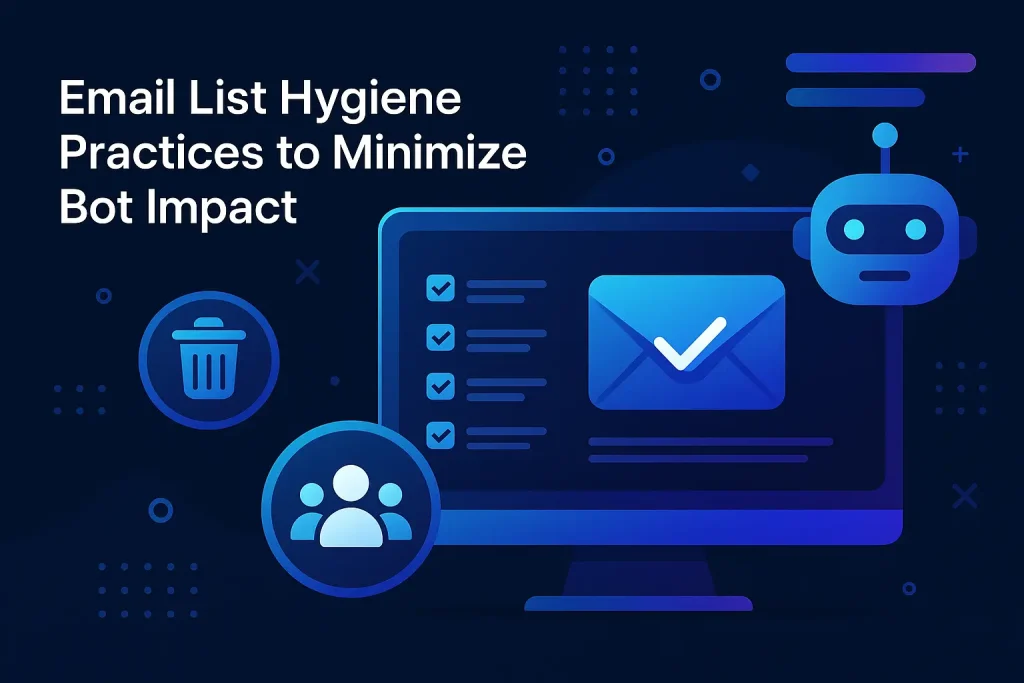
Keeping your email list clean is key to fighting fake bot traffic. As bots get smarter, a clean and active email list is vital for email marketing success.
Regular List Cleaning Protocols
Cleaning your email list often is a must. It helps get rid of inactive or fake subscribers. This process includes several important steps.
Bounce management is very important. Bounce Management Strategies mean removing email addresses that bounce back. This helps keep your sender reputation safe.
Engagement-Based Pruning is also key. It means removing subscribers who don’t interact with your emails. This boosts your engagement numbers.
Double Opt-in Implementation
Using double opt-in can lower the chance of bots joining your list.
This method uses Verification Email Best Practices. It makes sure verification emails are easy to understand and respond to.
Confirmation Page Security is also important. Things like CAPTCHAs help keep bots out of your confirmation page.
Engagement-Based Segmentation
Segmenting your list by engagement helps spot and remove suspicious subscribers. This makes your campaigns more effective.
Behavioral Segmentation Techniques help tailor your campaigns to your subscribers. This makes your emails more relevant and engaging.
By Isolating Suspicious Subscribers, you can stop bots from messing with your campaign results. This is backed by “The DMA’s 2023 Email Marketing Benchmark Report”.
Measuring the Effectiveness of Your Anti-Bot Measures
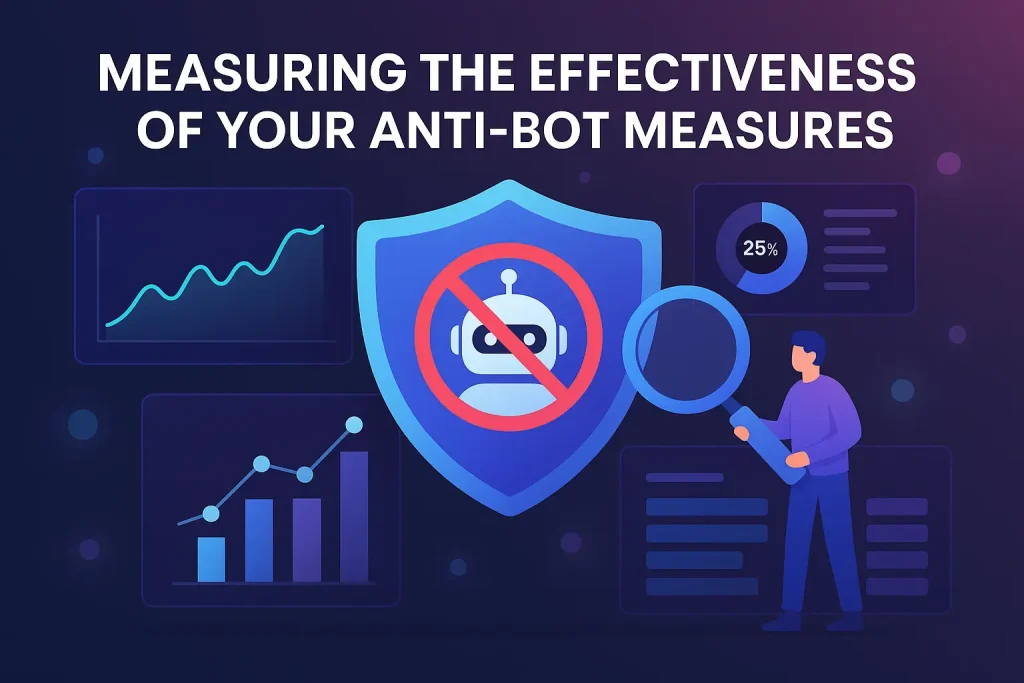
To keep your email marketing safe, you need to check how well your anti-bot tools work. This means looking at how these tools affect your campaigns and keep them secure.
Key Performance Indicators for Bot Mitigation
To see if your anti-bot plans are working, you must track important KPIs. Look at these metrics before and after you start using anti-bot tools.
Before and After Metrics Comparison
Looking at changes in click-through rates, conversion rates, and bounce rates helps. A big drop in bad activity means your plan is working well.
Security ROI Calculation
Figuring out the ROI of anti-bot tools shows their value. Compare the cost of these tools to the savings from less bot trouble.
Continuous Monitoring Systems
Keeping an eye on bot activity all the time is key. This means setting up alerts and using automatic responses.
Alert Thresholds Configuration
Choosing the right alert levels is important. You want to catch bot activity but not get too many false alarms.
Automated Response Mechanisms
Quick responses to bots can lessen their harm. This might include blocking bad IP addresses or asking for CAPTCHA checks.
Regular Security Audits
Doing regular security checks is vital. This includes testing your defenses and getting outside help.
Penetration Testing Approaches
Penetration testing mimics bot attacks to test your system. It finds weak spots and helps make your security better.
Third-Party Verification Services
Using outside services for checks gives you fresh views. They can suggest ways to make your anti-bot efforts stronger.
By using these methods, email marketers can better understand their anti-bot tools. They can also keep getting better at fighting off new bot threats.
Developing a Bot Traffic Response Plan

Fake bot traffic keeps changing. It’s key to have a strong plan to protect email marketing. A good plan helps marketers fight bot threats fast and well.
Immediate Actions When Bot Activity is Detected
When bot activity is found, quick action is needed. Containment Procedures must be set up to stop more bots.
Containment Procedures
Rate limiting and IP blocking can stop bot traffic. Tools like CAPTCHA also help a lot.
Evidence Collection Methods
It’s important to collect evidence of bot activity. This helps understand the problem and plan for the future. It includes logs and traffic pattern analysis.
Cross-Team Coordination Strategies
Bot traffic response needs teamwork. IT Security Collaboration is very important.
IT Security Collaboration
Working with IT security teams is key. Regular meetings and sharing threat info help a lot.
Marketing Team Response Protocols
The marketing team needs clear plans for bot activity. This includes changing campaign strategies and talking to stakeholders.
Documentation and Reporting Procedures
Keeping detailed records of bot activity is vital. Incident Documentation Templates make this easier.
Incident Documentation Templates
Standard templates help capture all needed info during an incident. This makes analysis easier.
Stakeholder Communication Plans
It’s important to tell stakeholders about bot activity and how it’s being handled. Plans should be ready for this.
With a solid bot traffic response plan, email marketers can keep their campaigns safe. They can also keep their marketing metrics accurate.
Case Studies: Successful Bot Traffic Mitigation

Good email marketing needs strong security against fake bots. Looking at real examples helps marketers learn how to fight bots well.
Enterprise-Level Solutions
Big companies use smart ways to stop bots. They mix new tech with careful planning.
Fortune 500 Implementation Examples
A top Fortune 500 company used many ways to fight bots. They used advanced CAPTCHA systems and IP verification. This cut down fake bot traffic a lot.
| Strategy | Implementation Time | Effectiveness |
|---|---|---|
| Advanced CAPTCHA | 3 months | 80% reduction |
| IP Verification | 2 months | 70% reduction |
Resource-Intensive Approaches
Some big solutions need a lot of resources. But, they can bring big benefits in the long run.
Small Business Approaches
Small businesses can fight bots too. They use strategies that fit their size and budget.
Budget-Friendly Strategies
Small businesses use cost-effective solutions. They clean up their email lists and use tools to watch behavior. These steps help a lot.
Some small businesses hire experts for security. This gives them access to expertise and technologies they can’t afford on their own.
Lessons Learned from Major Bot Attacks
Studying big bot attacks helps learn how to fight them better. It also teaches how to get back on track.
Recovery Strategies
Companies hit by big bot attacks have learned to bounce back. They watch their systems more closely and have quick plans ready.
Preventative Measures Developed
After big attacks, companies start doing more to stop future ones. They do regular security checks and train their workers to stay safe.
Future-Proofing Your Email Marketing Against Evolving Bot Threats
Bot threats are getting smarter. This means email marketing needs to get smarter too. Marketers must use new tech and predict problems to stay safe.
Emerging Technologies in Bot Detection
New tech is changing how we fight bots. These tools are key for keeping email campaigns safe from sneaky bots.
AI-Powered Detection Systems
Artificial Intelligence (AI) is making bot detection better. AI-powered systems learn and get better over time. They spot and stop bot traffic fast.
Blockchain Verification Methods
Blockchain technology helps prove emails are real. It adds security to email campaigns, keeping them safe.
Predictive Analysis and Machine Learning Applications
Predictive analysis and machine learning are vital. They help marketers see and stop bot threats before they start.
Pattern Recognition Advancements
New pattern recognition helps spot bots. It finds and blocks bot traffic, keeping emails safe.
Anomaly Detection Algorithms
Anomaly detection algorithms find odd patterns that might be bots. They keep email marketing data honest.
Staying Informed on Bot Evolution
Marketers must keep up with bot tech. Using industry resources and threat updates helps fight bots.
Industry Resources and Communities
Joining industry resources and communities helps share knowledge. It makes fighting bots better for everyone.
Threat Intelligence Subscriptions
Subscribing to threat intelligence services gives updates on bots. It helps marketers stay ahead of new threats.
By using new tech and staying informed, email marketers can protect their campaigns from bots.
Conclusion
Fake bot traffic is a big problem for email marketing. We’ve talked about how to fight it. Marketers can lessen its harm by using the right strategies.
Using fake traffic monitoring software is key. It helps spot and stop bots. Also, cleaning your email list, making sure people really want to join, and watching how people act can help a lot.
It’s important to keep watching for new bot threats. This way, your emails stay focused and work well. It keeps your money safe and your reputation good.
By taking these steps, you protect your marketing. You also make your real audience’s experience better and more real.
FAQ
What is fake bot traffic in email marketing?
Fake bot traffic in email marketing is when bots, not people, visit your site. This can mess up your numbers and hurt how well your campaigns do.
How can I detect fake bot traffic in my email campaigns?
Look for odd patterns in your traffic. Tools like email analytics can help spot bots. They use CAPTCHA to check if it’s a real person.
What are some common types of fake bot traffic affecting email campaigns?
There are several types of bots. Some click on links, others fill out forms. Each type can harm your email marketing in different ways.
How can I prevent fake bot traffic from damaging my email marketing metrics?
Use technical tricks like JavaScript challenges and rate limits. Keep your email list clean and make sure people really want to join.
What tools are available to help detect and prevent fake bot traffic?
Tools like email analytics and CAPTCHA can help. IP verification and behavioral analysis tools also catch suspicious activity.
How can I measure the effectiveness of my anti-bot measures?
Track your numbers before and after you start using anti-bot tools. This shows how well they work. Set up alerts to keep watching.
What are some best practices for email list hygiene to minimize bot impact?
Clean your list often and make sure people really want to join. Use engagement to spot and remove bots.
How can I stay informed about evolving bot threats and emerging technologies in bot detection?
Follow industry news and join online groups. Subscribe to threat intelligence and use AI to stay ahead of bots.

